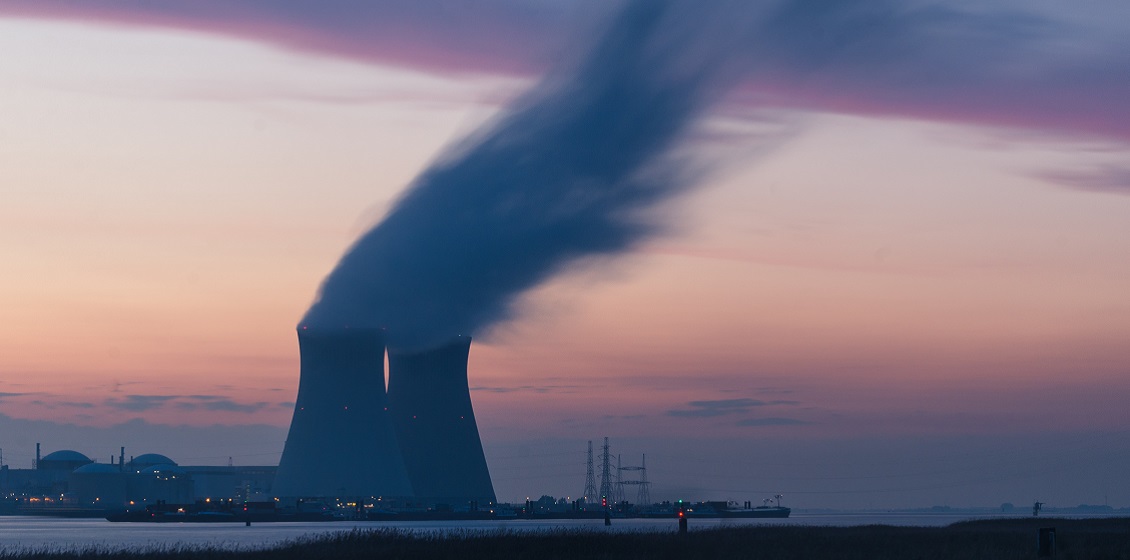In February 2022, the Chinese government approved the opening of three new coal mines—two in the northwestern province of Shaanxi and another in Inner Mongolia. This is a part of its efforts towards augmenting coal-based power generation. The plan includes opening 43 new coal-fired power plants, and 18 new blast furnaces, as projected by the government in the first half of 2021. China is not the only country to step up fossil fuel-based energy production in the recent past. In June 2020, India announced the auction of 41 new coal blocks for commercial mining and opened the mining sector for private players. The government said it would spend $6.8 billion on creating infrastructure for coal extraction and transportation. In Mexico, President Andres Manuel Lopez Obrador has been pushing for a bill that would give the state complete control over the energy market. This would make the private investments in the renewable energy sector unviable as the country moves towards spending billions of dollars on fossil fuels.
This defiance of the Global South towards the Global North’s push for clean energy, was reflected in the UN Climate Change Conference at Glasgow in November 2021, which saw significant compromises towards clean energy transition goals. One of the noteworthy among them is the agreement to “phase down” coal-fired power plants, against the earlier goal to “phase out” by 2040. In reality, even the phasing out of coal-based power, and fossil fuel at large, for the Global South remains a distant goal.
Why Fossil Fuel Will Continue to Light Homes in the Global South?
The Sustainable Development Goal 7 (SDG) by the UN on energy talks about universal access to ‘affordable and clean’ sources of power, with substantial increase in the share of renewable energy by 2030. However, the simultaneous use of terms ‘clean’ and ‘affordable’ is a paradox, for the shift to clean energy is not an affordable switch for most developing countries.
Globally, about 13 percent of the world population does not have access to electricity. Most of these countries are in Sub-Sahara Africa, according to statistics from One World in Data. Only 8.8 percent of Chad’s population has electricity access. Nearly, three billion people globally do not have access to clean fuels for cooking—a problem exclusively of the poor countries in the Global South. An average US citizen consumes more than ten times the energy of the average Indian, four-five times that of a Brazilian, and three times more than China, according to the data.
These disparities in energy consumption across nations were further aggravated by Covid-19, which triggered global coal shortages due to supply chain disruptions in the peak phase of the pandemic, followed by huge demands in the recovery phases. In response, India and China pressed the panic button and ramped up coal supplies. According to a report published in the Guardian, Chinese coal production climbed to an all-time high of 4.07 billion tonnes in 2021, up 4.7 percent on the previous year. China accounts for roughly 54 percent of the world’s coal consumption, while India accounts for 11.6 percent. China and India have the world’s fourth and fifth-largest coal reserves in the world respectively.
“The COVID-19 pandemic has had an unanticipated impact on energy transition. The impact is multi-dimensional, ranging from the continued downturn in the energy market to the disrupted global energy supply chain. The plunging fossil fuel prices have also weakened the price competitiveness of renewable energy,” according to research published at Applied Energy in February 2022.
“This transition to renewables must happen, but unfortunately, the demand is likely to rise much faster than what only renewable energy can provide. If the quality of life in India has to improve, the per capita consumption of electricity has to rise from 1200 units at present to 2000 units by 2030. These 800 incremental units multiplied by 1.3 billion people, would itself means 1100 billion units of additional generation. Even 50 percent of that addition will not be met by the renewables,” said Partha Bhattacharya, Former Chairman, Coal India, which controls more than 80 percent of coal assets in India in a telephonic interview with DDRN.
At present, India’s installed capacity for renewables is about 150 GW, and the government has set the target of 500 GW by 2030. Currently, coal contributes around 78 percent to India’s total power generation. By 2030, nearly 54 percent of India’s power generation would still be met by coal, according to government data.
“For Global North, the energy transition is about the question of replacement. For India, renewable energy will not replace, but only complement the energy needs. Therefore, the growth of renewable doesn’t mean coal is ending, and this will continue for the next 10-15 years,” said Bhattacharya.
In Africa, solar and wind are likely to account for less than 10 percent of the electricity mix in 2030, according to an article at The Conversation (Alova and Trotter). A report by the Global Energy Monitor, published in 2021 suggests, there are 432 new coal mine developments and expansion projects currently announced or under development worldwide, amounting to 2,277 MPTA of new capacity. China, Australia, India, and Russia make up over three-fourths of these projects.
“While many nations in the Global North have begun to turn away from coal, the associated decline in cost has made it an attractive option for many global south nations looking for new sources of energy. On the other hand, the advent of directional drilling and hydraulic fracturing technologies has made natural gas (also a carbon-emitting fossil fuel) abundant and cheap. So, these are the energy sources we see expanding most quickly in developing nations, in an absolute sense,” said Patrick Trent Greiner, Assistant Professor of Sociology and Public Policy Studies, Department of Sociology, Vanderbilt University, in an interview over email with DDRN.
Displacement and Energy Imperialism
At Assam in northeast India, more than 100 farmers, along with women and children, have been protesting since January 29, 2021, against forced eviction from their lands for setting up a solar power plant. About 5,000 KM away, a wind power project in Nyandarua county in Kenya had to be shelved in 2016 after local communities alleged that they were misled into signing oppressive contracts. While these incidents might be geographically disparate, they represent conflicts that come with the energy transition in the Global South.
According to the data from Land Conflict Watch, in India at present there are six ongoing conflicts over land for renewable energy projects, affecting about 2836 people and covering 6274 hectares of land. “The problem is that such conflicts do not make big headlines, as the displacement in case of solar energy is more in terms of livelihoods than dwelling places in solar projects. In today’s world, big companies want to control the energy market. So, for this concentrated energy production, controlled by big corporates, huge parcels of lands are needed, leading to the displacement of livelihoods,” said Pranab Ranjan Choudhury, Associate Director, Center of Land Governance, India in a Zoom interview with DDRN.
The displacement brought about by energy transition is two-pronged: displacement of livelihoods of the farmers affected by the project and the coal mining community. Research by Sandeep Pai at the University of British Columbia, in 2017, shows, at least 40 percent of India’s districts (284 out 736 districts in India) have some form of coal dependency.
Researchers also point out that the uneven distribution of energy and the rising dominant position of certain countries in the Global North would usher ‘energy imperialism’ when a handful of nations dictate the terms of the energy transition.
“In many ways, I think that energy imperialism has been at the center of the global economy’s development. If the global energy store is looked at monolithically, then there have always been a handful of nations dominating deliberations of what energy sources are used, where they are drawn from, and who gets to consume them. In the past nearly, all energy was funneled to the Global North either directly or embodied in goods that Global North nations consumed, but declining costs in access to oil, then gas, and then renewables has led to less desirable fuels like coal being sent to developing nations,” said Greiner.
Greiner’s views are also supported in an article published in the Springer in March 2022 (Wapakala and Ogolla), which points out, “while it is fair that the world is today discussing how to tackle the climate crisis and making pledges, what is not acceptable is the paradox of the powerful countries of the West pushing for climate adjustment in the South and championing new ‘green’ conditionalities of development finance (including designing new instruments and facilities such as the IMFs Resilience and Sustainability Trust) while continuing not to honor their existing financial commitments, and at the same time, continuing to invest heavily in extractive corridors to shore up their supplies of oil, gas, and coal.”
An Optimum Solution
Despite the pressing needs of energy self-sufficiency in the Global South, the realities of climate change are hard to ignore. According to a report by the World Bank published in October 2021, natural disasters cost about $18 billion a year in low- and middle-income countries through damage to power generation and transport infrastructure alone. They also trigger wider disruptions for households and firms costing at least $390 billion a year.
“We do understand that we cannot abruptly close a coal mine today and start a renewable energy project tomorrow. The process of a just transition starts with a conversation led by the government, and consultation with communities, with business, including the unions in the case of South Africa. The problem that we see as environmentalists is that there is not enough effort put in terms of applying the existing research to find alternatives that will enable a just energy transition. We also don’t see the political will to do this,” said Nhlanhla Sibisi, Climate and Energy Campaigner for Greenpeace Africa, in a Zoom interview with DDRN.
According to Aditya Valiathan Pillai, associate fellow at Centre for Policy Research (CPR), the transition to clean energy must come with incentives for private players to participate in the process. He also points out that if countries like India continue to build new power plants, it might lead to the creation of stranded assets, difficult to phase out later. Pillai suggests that the energy transition should be optimized balancing the needs of all stakeholders.
“I think the transition to clean energy must happen, and at the earliest. This requires a few prior steps. We must keep in mind that we’re looking at tens of thousands of livelihoods. So, there has to be a soft transition. First, a policy package must be put in place for the displaced communities. Secondly, the transition needs to be made very quickly, be it in the form of adding the capacity for renewables or pushing for electric vehicles. The best strategy to achieve these objectives would be to set up a manufacturing base. This, in turn, would happen, only if companies find this investment profitable,” said Pillai in a Zoom interview with DDRN.
While some of the advanced nations in the world briskly move towards clean energy, the transition in low and mid-income countries is a complex process with several social and economic considerations. At the same time, the rising global temperature, calls for urgent actions. Balancing the two considerations to get optimum results is the challenge that the world leaders need to navigate.
Namrata Acharya is a journalist with bylines in Al Jazeera, South China Morning Post Zenger News, Mongabay, The Wire, The Juggernaut, KR- Asia and more












